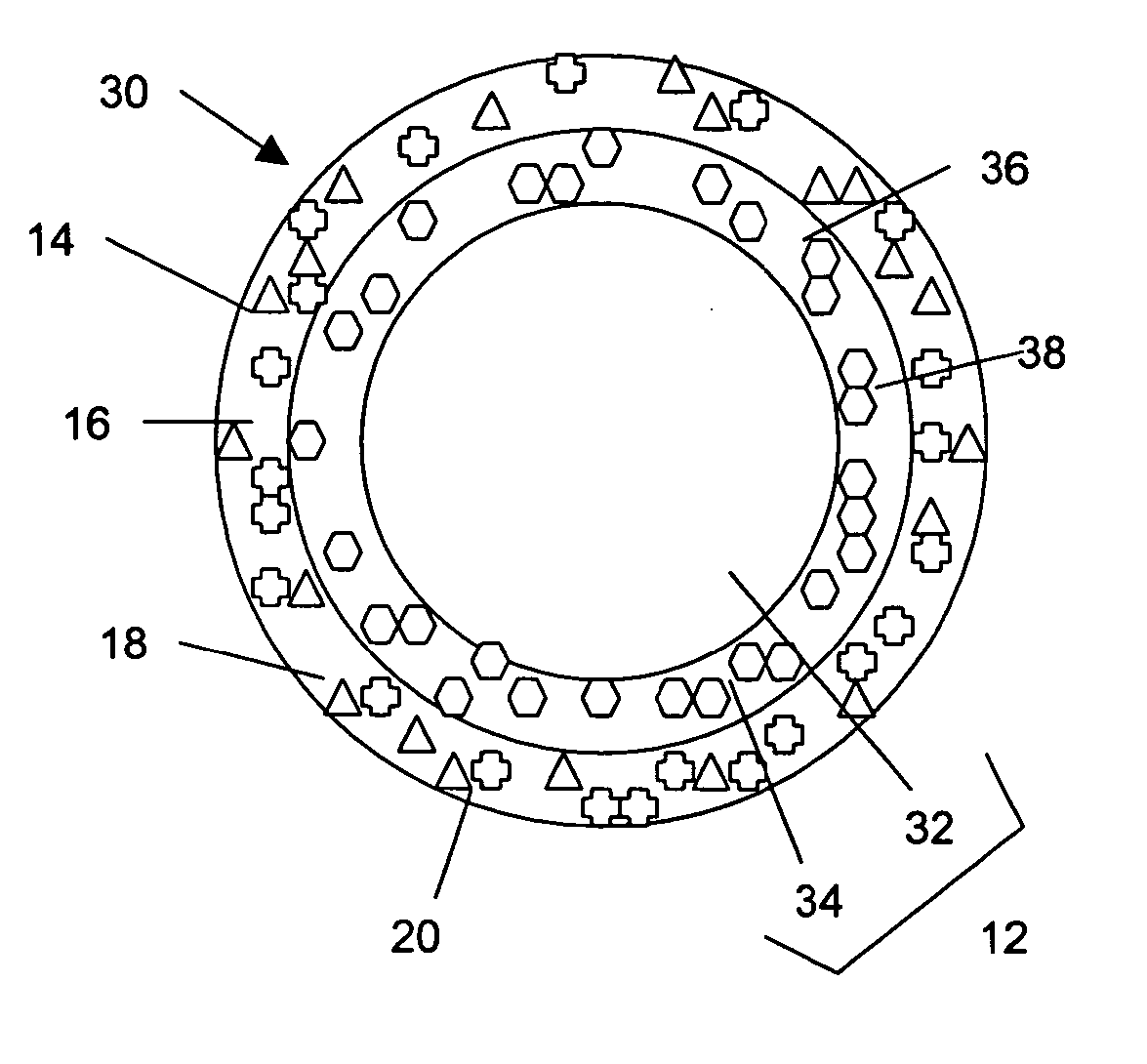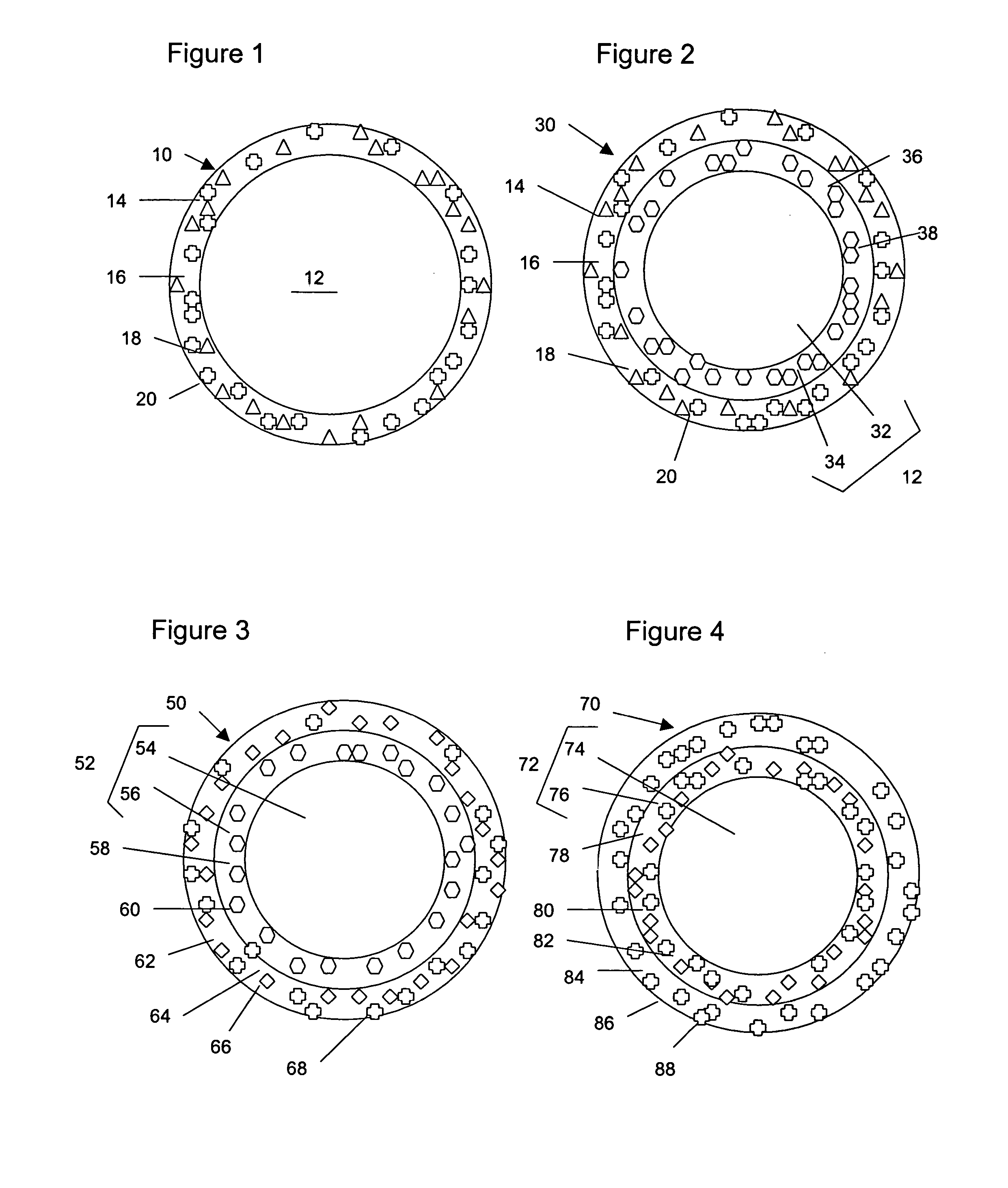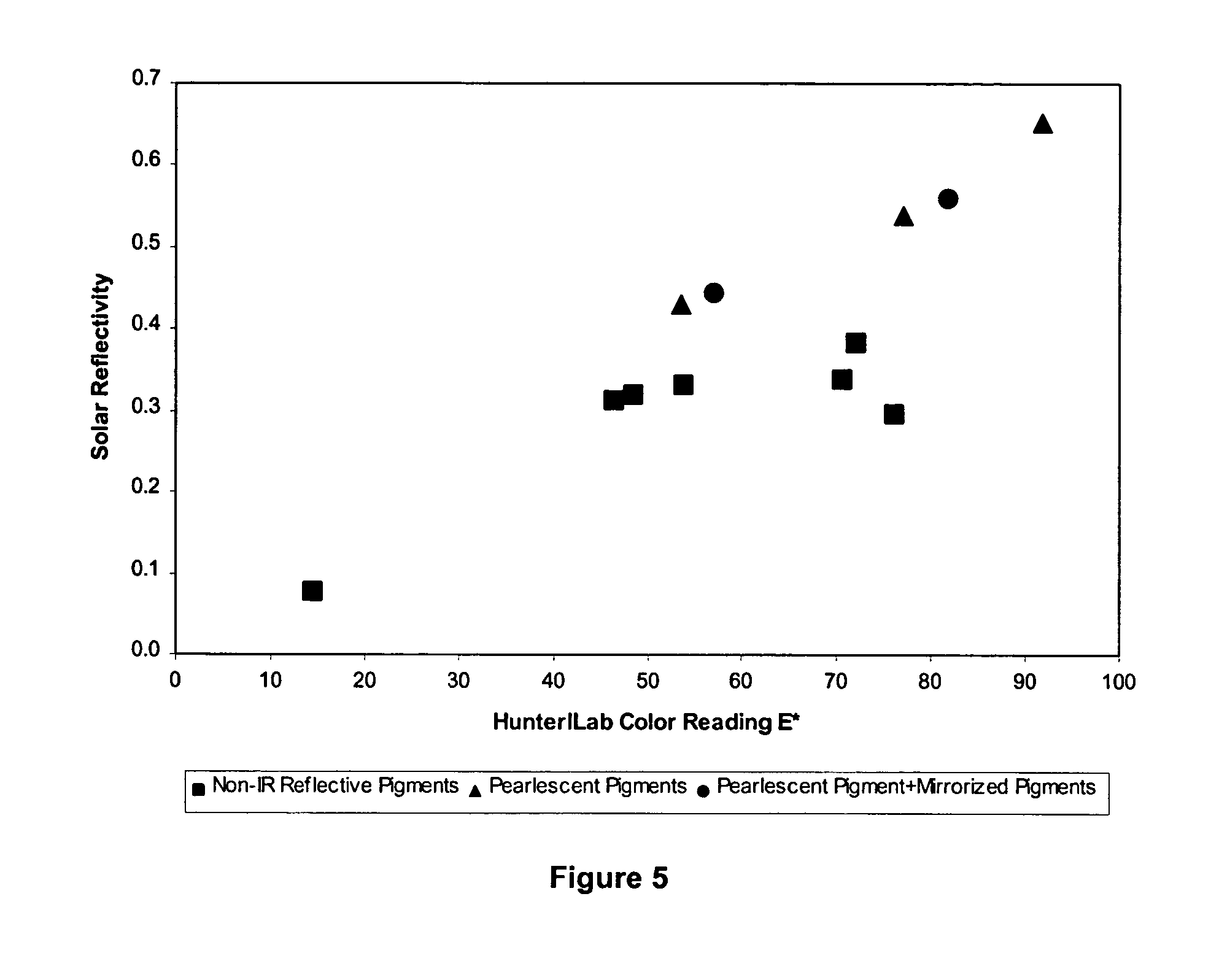Colored roofing granules with increased solar heat reflectance, solar heat-reflective shingles, and process for producing same
a technology of solar heat reflectance and color roofing granules, which is applied in the field protective granules, can solve the problems of reducing the effective service life of asphalt roofing, increasing the temperature of asphalt roofing shingles, and aesthetically undesirable utilitarian approaches, and achieves the effect of enhancing the solar heat reflectance of the final produ
- Summary
- Abstract
- Description
- Claims
- Application Information
AI Technical Summary
Benefits of technology
Problems solved by technology
Method used
Image
Examples
example 1
[0103] Roofing granules are prepared by using 1 kg of US #11 grade mineral particles as a base followed by color coating with a mixture of 35 g sodium silicate binder from Occidental Petroleum Corp., 17.5 g of kaolin clay from Unimin Corp., and 16 g of TZ1001 pearlescent pigment from Global Pigments, LLC. The color-coated granules are heat-treated in a rotary drum at temperatures between 480° C.-510° C. in order to cure the coating. The finished granules have a brownish gray appearance with an average solar heat reflectance of 23.5% measured by a D&S Solar Reflectometer, as compared to initial solar reflectance of 18.2%.
example 2
[0104] In this example, a highly reflective, white-pigmented inner coating is used as a substrate to reflect additional infrared radiation, while an outer color coating with IR-reflective pigments are used to provide desirable colors. 1 kg of white TiO2 pigmented roofing granules with solar heat reflectance greater than 30% (CertainTeed Corp., Gads Hill, Mo.) are used as the base mineral particles and are colored by a second coating comprised of 100 g organic binder (Rohm and Haas Rhoplex® EI-2000), 12 g of TZ4002 and 3 g of TZ1003 pearlescent pigments both from Global Pigments, LLC. The resultant granules are dried in a fluidized bed dryer to a free-flowing granular mass with very desirable deep, reddish gold appearance (L*=44.10, a*=20.79, b*=18.59). The cured granule sample has a high solar reflectance of 31.0% as compared to the 22% reflectance of roofing granules with similar colors obtained by typical inorganic pigments, e.g., Bayer 3488×tan (CI #77496) pigment and the Bayer 1...
examples 3a , 3b and 3c
EXAMPLES 3a, 3b and 3c
[0105] The effects of light-interference platelet pigments on solar heat reflectance is evaluated by a drawdown method. Samples of drawdown material are prepared by mixing 20 g of sodium silicate from Occidental Petroleum Corp. and 2 g of each of TZ5013, TZ5012, TZ4013 pearlescent pigments from Global Pigments, LLC, respectively, using a mechanical stirrer under low shear conditions. Each coating is cast from a respective sample of drawdown material using a 10 mil stainless steel drawdown bar (BYK-Gardner, Columbia, Md.) on a WB chart from Leneta Company. The resulting uniform coating is air-dried to touch and the solar heat reflectance is measured using a D&S Solar Reflectometer. The color is also measured using a HunterLab Colorimeter. By plotting the solar heat reflectance vs. the strength in color space using E*(E*=(L*2+a*2+b*2)1 / 2, it is shown that the light-interference platelet pigments exhibit significantly higher solar heat reflectance over the traditi...
PUM
| Property | Measurement | Unit |
|---|---|---|
| Reflectance | aaaaa | aaaaa |
| Reflectance | aaaaa | aaaaa |
| Fraction | aaaaa | aaaaa |
Abstract
Description
Claims
Application Information
 Login to View More
Login to View More - R&D
- Intellectual Property
- Life Sciences
- Materials
- Tech Scout
- Unparalleled Data Quality
- Higher Quality Content
- 60% Fewer Hallucinations
Browse by: Latest US Patents, China's latest patents, Technical Efficacy Thesaurus, Application Domain, Technology Topic, Popular Technical Reports.
© 2025 PatSnap. All rights reserved.Legal|Privacy policy|Modern Slavery Act Transparency Statement|Sitemap|About US| Contact US: help@patsnap.com



